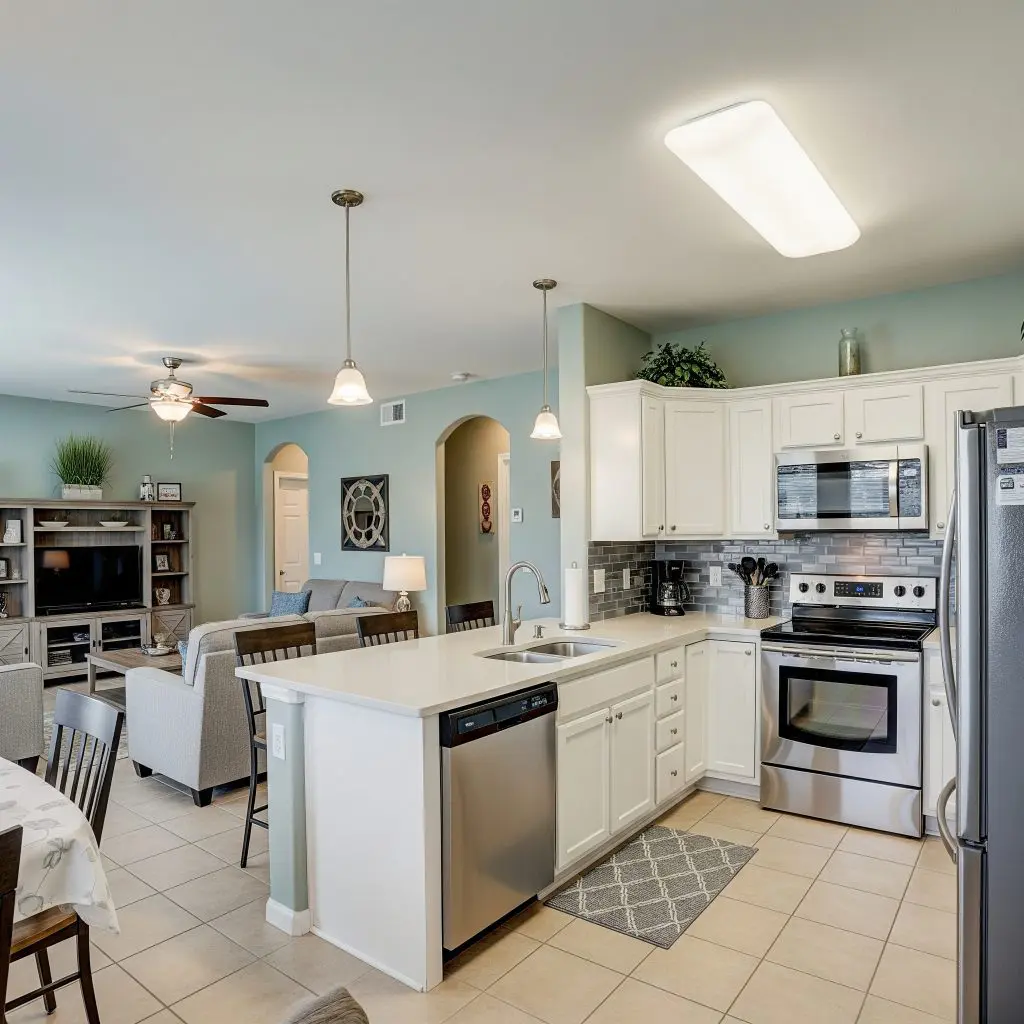DSCR Loans in Texas: Your 2025 Guide to Investing in Single-Family Rentals
Texas continues to lead the nation in real estate opportunity in 2025, with Houston, Dallas-Fort Worth, and San Antonio ranking in the top 10 U.S. cities for rental demand. Statewide, Texas saw 6.3% rental growth and an average single-family home price of $360,200 in Q1 2025 (Texas A&M Real Estate Center, April 2025). Investors can leverage DSCR loans to scale portfolios quickly, even as interest rates remain elevated nationally. If you’re looking to boost cash flow and secure financing without tax return headaches, understanding Texas DSCR loans is critical this year.
- DSCR Loans in Texas: Your 2025 Guide to Investing in Single-Family Rentals
- Texas Real Estate Market Overview: 2025 Snapshot
- How DSCR Loans Work in Texas
- Single-Family Rental Investment Opportunities Across Texas
- Texas DSCR Hotspots: Top ZIP Codes for Investment
- DSCR Lender Landscape in Texas (2025)
- DSCR Application Process: Step-by-Step for Texas Investors
- Success Story: Texas SFR DSCR Acquisition
- Timing the Texas Market: Invest Strategically with DSCR Loans
- Get Started: Tap Texas DSCR Loan Experts Today!
Texas Real Estate Market Overview: 2025 Snapshot
- Median Home Price: $360,200 — up 4.1% YoY
- Average Rent (single-family): $2,140/month statewide
- Cap Rates: 5.5%–7.1% (Houston, 77009; DFW, 75228; San Antonio, 78228)
- Vacancy Rates: 7.8% statewide; Dallas (5.9%), Austin (8.2%)
- Population Growth: Texas led the nation with +1.3 million new residents since 2020 (Census Bureau)
- Job Growth: +2.8% (Q1 2025), driven by technology (Austin), healthcare (Houston), and energy (Midland/Odessa)
Compared to the national average rent (,050) and cap rate (5.3%), Texas offers both higher yields and rapid appreciation. Rental demand surges around growing metros and suburban corridors, with investors targeting B-class neighborhoods for optimal cash flow.

How DSCR Loans Work in Texas
Debt Service Coverage Ratio (DSCR) loans are specifically designed for real estate investors. Approval is based on property cash flow rather than the borrower’s personal income, making them ideal for scaling portfolios or self-employed investors. Texas lenders generally assess the property’s gross rental income divided by the total mortgage payment (principal, interest, taxes, and insurance).
Need capital? GHC Funding offers flexible funding solutions to support your business growth or real estate projects. Discover fast, reliable financing options today!
Test Your Expertise: The Complexities of the 1031 Exchange

As a sophisticated real estate investor, you understand that the 1031 Exchange is a cornerstone strategy for tax deferral and wealth accumulation. But beyond the basics, the intricacies of the 1031 Exchange rules can pose significant challenges. This quiz is designed to test your in-depth knowledge and highlight critical nuances that separate casual investors from true experts in 1031 Exchange transactions.
Instructions: Choose the best answer for each question.
⚡ Key Flexible Funding Options
GHC Funding everages financing types that prioritize asset value and cash flow over lengthy financial history checks:
-
Bridge Loans: These are short-term loans used to "bridge the gap" between an immediate need for capital and securing permanent financing (like a traditional loan or sale). They are known for fast closing and are often asset-collateralized, making them ideal for time-sensitive real estate acquisitions or value-add projects.
-
DSCR Loans (Debt Service Coverage Ratio): Primarily for real estate investors, these loans are underwritten based on the property's rental income vs. debt obligation ($\text{DSCR} = \text{Net Operating Income} / \text{Total Debt Service}$), not the borrower's personal income or tax returns. This offers flexibility for those with complex finances.
-
SBA Loans: The Small Business Administration (SBA) guarantees loans offered by partner lenders. While providing excellent terms (long repayment, lower rates), the application process is typically slower than private/bridge funding, often making them less suitable for immediate needs. SBA eligibility heavily relies on the DSCR metric for repayment assessment.
🌐 Learn More
For details on GHC Funding's specific products and to start an application, please visit their homepage:
The Ultimate DSCR Loan for Rental Property Quiz

Are you looking to expand your real estate investment portfolio? A DSCR loan might be the perfect tool to help you achieve your goals without relying on traditional income documentation. Test your knowledge with this quiz to see if you're ready to master the intricacies of a DSCR loan for rental property.
- DSCR Calculation Example: Rental Income: $2,500/month; PITIA: $2,050/month → DSCR = 1.22x
- Minimum Qualifying DSCR (TX): Most lenders require DSCR ≥ 1.15; premium rates for DSCR ≥ 1.25
- Loan-to-Value (LTV): Up to 80% for purchase; 75% for cash-out refi
- Current Rates (Q2 2025): 7.2%–8.1% fixed (varies by DSCR strength & credit)
Example: For a $350,000 single-family property in Houston (77008), you could finance up to $280,000 (80% LTV) with a DSCR loan—no tax returns required.
Single-Family Rental Investment Opportunities Across Texas
Single-family rentals (SFRs) are outperforming multi-family in Texas in 2025, thanks to:
- Tenant demand for space and yards in suburban markets
- Higher average rents and appreciation potential
- Lower maintenance and turnover costs vs. apartments
✅ Small Business Resources
-
SBA – Small Business Administration
https://www.sba.gov - SCORE Mentors (Free Mentoring & Workshops)
https://www.score.org - Small Business Development Centers (SBDC)
https://americassbdc.org
Are You an SBA Real Estate Loan Expert?

Test your in-depth knowledge on using SBA Loans for owner-occupied commercial Real Estate acquisition. These questions delve into the critical details that can impact your business's growth and financial strategy.
Example SFR Investment:
- Dallas ZIP 75228: 3-bed, 2-bath brick, bought for $320,000 in Feb 2025
- Market Rent: $2,200/month
- PITIA @ 7.5% (80% LTV): $2,070/month
- DSCR: $2,200/$2,070 = 1.06 (some lenders will require ≥1.15, so higher rent or lower price increases approval odds)
- Cap Rate: 6.0% (net of 8% management and 5% vacancy)
✅ Real Estate Investor Resources
-
AirDNA (Short-Term Rental Data)
https://www.airdna.co - Rentometer (Rent Comps)
https://www.rentometer.com - Zillow Research & Data
https://www.zillow.com/research
DSCR Loan IQ Quiz!

Test your knowledge of Debt Service Coverage Ratio (DSCR) loans!
B-class SFRs in Texas suburbs offer the highest cash-on-cash returns, especially in areas near employment centers and future transit lines.
Texas DSCR Hotspots: Top ZIP Codes for Investment
- Houston: 77009, 77008, 77018 (Inner Loop rebirth, new light rail access, average SFR rent: $2,150–2,600)
- Dallas-Fort Worth: 75228, 76116, 75052 (East Dallas, West Fort Worth, Grand Prairie; rents: $2,100–$2,450)
- San Antonio: 78228, 78213, 78247 (West/North Central SA; rents: $1,800–2,350; near major medical and education employment)
- Austin: 78744, 78753, 78660 (Southeast, North Austin, Pflugerville; rents: $2,300–2,800; tech sector commuters)
- Suburban Houston: 77379 (Klein ISD, The Woodlands fringe; rent: $2,250)
Local Demand Drivers: Tesla’s expanded Gigafactory (Austin, 78725), Houston’s Medical Center, Dallas tech corridor expansion (Plano, Frisco), and Campus USA development in San Antonio. Rapidly growing suburbs consistently outperform downtowns.
DSCR Lender Landscape in Texas (2025)
- Kiavi (formerly LendingHome): 7.25%–7.85% (very fast closings for SFRs, Dallas/Houston focus)
- Velocity Mortgage Capital: 7.5%–8.3% (DSCR as low as 1.0, higher rates for lower DSCR)
- Angel Oak: 7.4%–8.0% (prime for investors with multiple rental portfolios; national footprint)
- Finance of America Commercial: 7.2%–7.85% (strong in Houston/Austin, cash-out up to 75%)
- Lima One Capital: 7.8%–8.3% (work statewide, allows short-term rental financing)
- RCN Capital: 7.6%–8.4% (blended national/TX-local programs; fast preapproval)
Tip: Texas lenders are highly competitive—buyers with ≥1.25 DSCRs and FICO 720+ will see better rates and faster turnarounds. Local lenders also understand Texas’s rapid insurance and property tax changes.
DSCR Application Process: Step-by-Step for Texas Investors
- Initial Consultation: Assess property goals and identify qualifying ZIP codes/neighborhoods
- Get Pre-Qualified: Lender reviews basic credit, PFS, and property type
- Property Underwriting: Submit address, estimated rent (can use appraisal or Rentometer)
- DSCR Calculation: Lender calculates on actual projected rent/PITIA
- Rate & Terms Quote: Evaluate LTV, interest rate, and cash reserves requirements
- Appraisal Order: Independent third-party appraiser confirms value and market rent
- Documentation Review: Provide title report, insurance, entity docs (LLC/corp/partnership as needed)
- Final Underwriting: Lender reviews all docs; may request rent comps or reserve/asset proofs
- Loan Docs & Closing: Electronic signatures, wire-cash to close, and deed/closing in 21–30 days typical
Required Documentation Checklist:
- Borrower ID (driver’s license/passport)
- Entity docs (LLC/Corp if applicable)
- Property contract
- Bank statements showing reserve funds (typically 3–6 months PITIA)
- Insurance binder
- Appraisal (with completed market rent schedule)
Common Challenges & Solutions:
- Low DSCR (<1.15): Increase down payment, lower offer, or use higher project rents with strong comp validation
- Insufficient reserves: Bring in a capital partner or use business bank funds
- Limited rental history: Provide strong lease comps or obtain rent projections from property managers
Success Story: Texas SFR DSCR Acquisition
In January 2025, an Austin investor purchased a 3-bed SFR in Leander (78641) for $395,000. Rent: $2,500/month; PITIA (7.5% on 80% LTV): $2,150/month. DSCR: 1.16. Cash invested: $79,000 (20%). Annual net cash flow (after 8% management, 5% vacancy): ,700. Projected 5-year ROI, including 4% annual appreciation: 11.9%. Taxes and insurance for newer homes are higher, but rent growth supports positive cash flow in high-demand locations.
Timing the Texas Market: Invest Strategically with DSCR Loans
- Peak buying seasons: Q2–Q3 (listings up 11% in 2025, but off-market SFRs close fastest)
- LTVs and DSCR minimums may tighten in late 2025 if rates rise
- Consider building new SFRs in growth corridors like Manor (78653) and Katy (77449) for highest appreciation potential
Get Started: Tap Texas DSCR Loan Experts Today!
Texas is one of the most investor-friendly states for DSCR financing in 2025. Whether you’re building an SFR portfolio or pivoting to high-yield rental markets, DSCR loans can get you there without W-2s or tax returns. Work with a specialist who understands local trends, lender criteria, and how to maximize your cash flow. Reach out for a free consultation, rate quote, and preapproval strategy for your next Texas investment.
